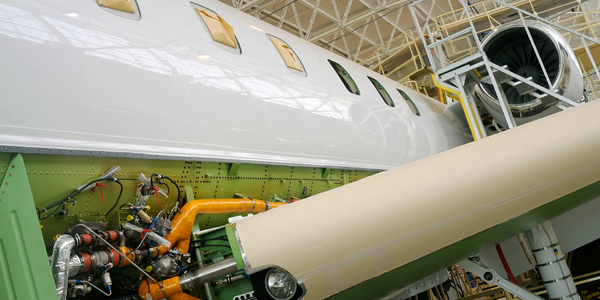Technology Category
- Analytics & Modeling - Digital Twin / Simulation
- Infrastructure as a Service (IaaS) - Virtual Private Cloud
Applicable Industries
- Aerospace
- Apparel
Applicable Functions
- Product Research & Development
Use Cases
- Digital Twin
- Virtual Reality
Services
- Testing & Certification
About The Customer
Wilson Sporting Goods Co. is a world-leading manufacturer of high-performance sports equipment, apparel, and accessories. For over a century, they have been creating, designing, and producing sports equipment for athletes who play Tennis, Golf, Baseball, Basketball, Football, Soccer, Volleyball, Softball, and more. Wilson has continually evolved how sports are played and enjoyed by millions. In the world of sports, the competition is fierce, and the relationship between an athlete and their equipment is a powerful one. With that dynamic association in mind, Wilson Labs, the innovation hub at Wilson, invents, designs, and engineers game-changing products, employing state-of-the-art sports technologies and expertise. In its Racquet Sports business, Wilson Lab’s innovation initiatives include material enhancements, mechanical enhancements, and changes to physical parameters of the racquet to fit evolving trends of the player’s game.
The Challenge
Wilson Sporting Goods Co., a leading manufacturer of high-performance sports equipment, was looking to reduce design cycle time and enhance product value in the development of their tennis racquet designs. The company wanted to take advantage of simulation, automation, and optimization technologies to achieve this goal. Wilson Labs, the innovation hub at Wilson, was particularly interested in exploring developments in Finite Element Analysis (FEA) for laminated composites that could be applied to their composite tennis racquet lines. They aimed to accomplish something unique or organic looking in terms of geometry. Until this point, FEA for composites had been almost non-existent in the racquet industry. Recognizing its potential as a better tool for lay-up design and optimization for weight, strength, stiffness, and simplicity, Wilson decided to take a leading role in employing this technology in the industry.
The Solution
Wilson Labs Design Engineer Bob Kapheim became familiar with Altair's HyperWorks® software and Altair ProductDesign engineering services. Altair ProductDesign team performed software simulation and test correlation for Wilson without them having to first invest in the software. Altair, having extensive experience with composites simulation methods within industries such as aerospace, was able to adapt the technology to the composites simulation of tennis racquets. The initial part of the work was done with a finite element model build based on the provided geometry representing the Outer Mold Line (OML) of the racquet that was undrilled, ungripped and without a handle. Modeling of the laminate was kept at a simplified level. For each ply, the lay-up document was reviewed to understand the ply location, and then surfaces were trimmed and organized. Ply thicknesses were assigned, as were material properties. Loads and boundary conditions were also applied. Several analyses were performed using Altair’s structural analysis and optimization software OptiStruct® and results were validated to correlate with physical test data.
Operational Impact
Quantitative Benefit

Case Study missing?
Start adding your own!
Register with your work email and create a new case study profile for your business.
Related Case Studies.

Case Study
Fire Alarm System and Remote Monitoring Sytem
Fire alarm systems are essential in providing an early warning in the event of fire. They help to save lives and protect property whilst also fulfilling the needs of insurance companies and government departments.Fire alarm systems typically consist of several inter-linked components, such as smoke detectors, heat detector, carbon monoxide, manual call points, sounders, alarm and buzzer. The fire alarm system should give immediate information in order to prevent the fire spread and protect live and property.To get maximum protection a shoe manufacturer in Indonesia opted for a new fire alarm system to monitor 13 production sites spread over 160 hectars. Although the company had an existing fire alarm system, it could not be monitored remotely.It was essential that the new system would be able to be monitored from a central control room. It needed to be able to connect to the existing smoke detector and manual call point. Information should be easily collected and passed on to the Supervisory Control and Data Acquisition (SCADA) system. Furthermore, the system should have several features such as alarm management, auto reporting, being connected to many client computers without additional cost, and run 24/7 without fails. The company also needed a system which could be implemented without changing the architecture of the existing fire alarm system.

Case Study
IoT Applications and Upgrades in Textile Plant
At any given time, the textile company’s manufacturing facility has up to 2,000 textile carts in use. These carts are pushed from room to room, carrying materials or semi-finished products. Previously, a paper with a hand-written description was attached to each cart. This traditional method of processing made product tracking extremely difficult. Additionally, making sure that every cart of materials or semi-finished products went to its correct processing work station was also a problem. Therefore, the company desired an intelligent solution for tracking assets at their factories. They also wanted a solution that would help them collect process data so they could improve their manufacturing efficiency.

Case Study
Airbus Soars with Wearable Technology
Building an Airbus aircraft involves complex manufacturing processes consisting of thousands of moving parts. Speed and accuracy are critical to business and competitive advantage. Improvements in both would have high impact on Airbus’ bottom line. Airbus wanted to help operators reduce the complexity of assembling cabin seats and decrease the time required to complete this task.

Case Study
Aircraft Predictive Maintenance and Workflow Optimization
First, aircraft manufacturer have trouble monitoring the health of aircraft systems with health prognostics and deliver predictive maintenance insights. Second, aircraft manufacturer wants a solution that can provide an in-context advisory and align job assignments to match technician experience and expertise.

Case Study
Aerospace & Defense Case Study Airbus
For the development of its new wide-body aircraft, Airbus needed to ensure quality and consistency across all internal and external stakeholders. Airbus had many challenges including a very aggressive development schedule and the need to ramp up production quickly to satisfy their delivery commitments. The lack of communication extended design time and introduced errors that drove up costs.




